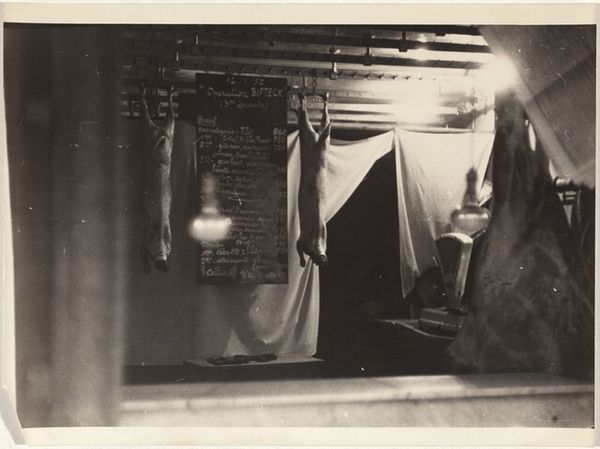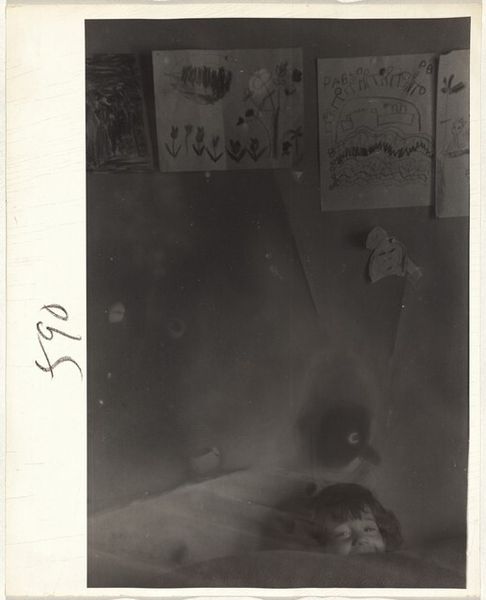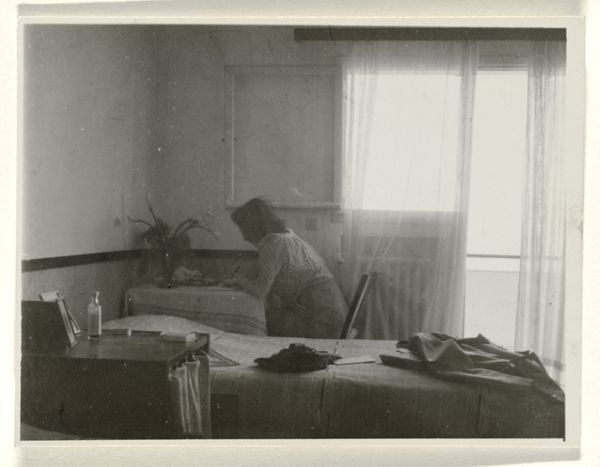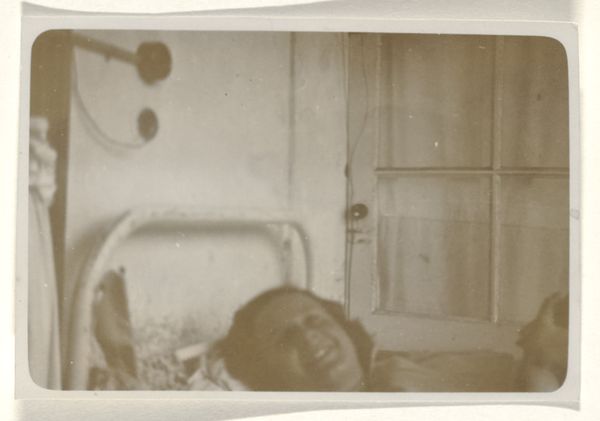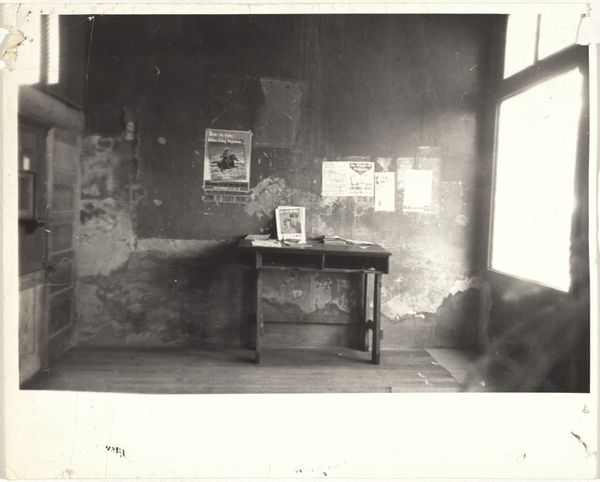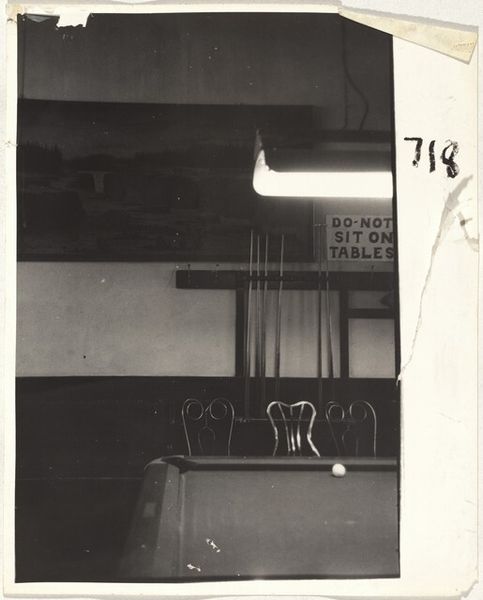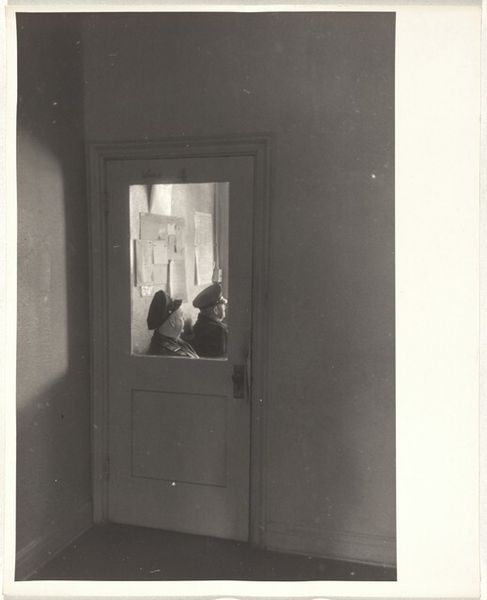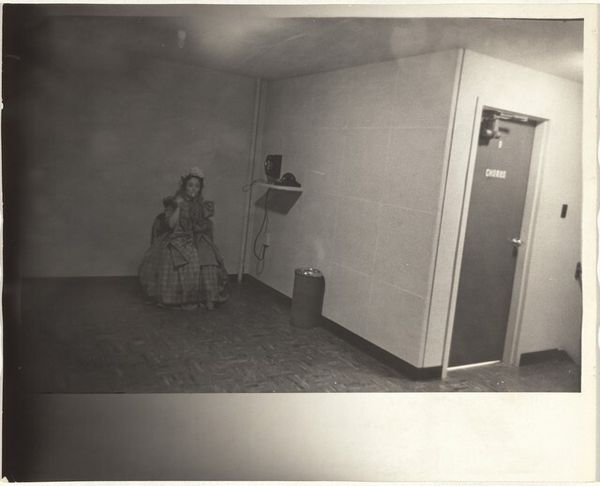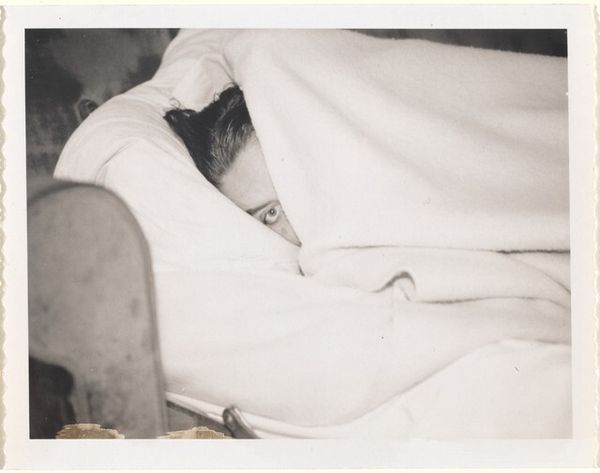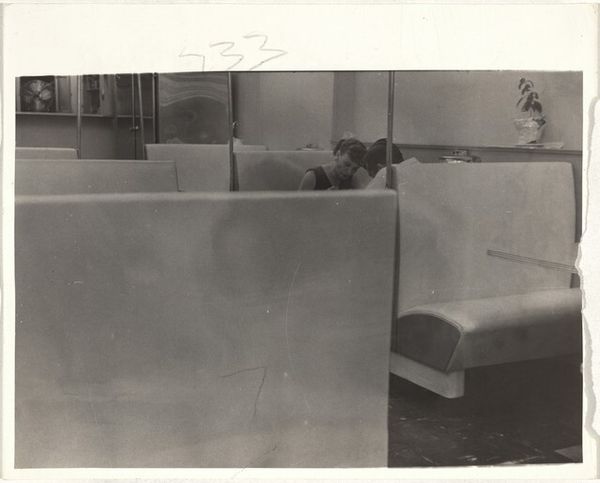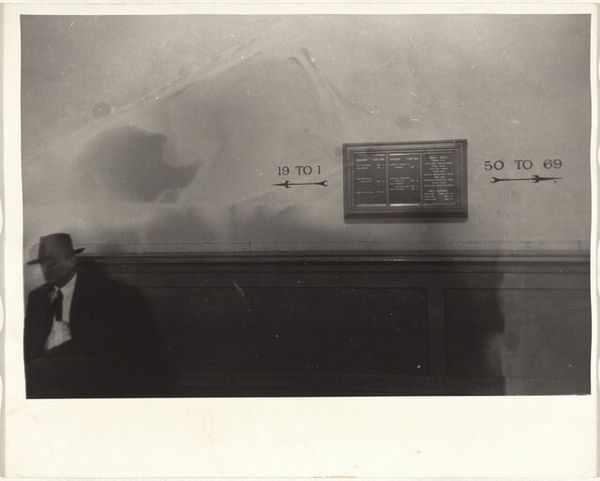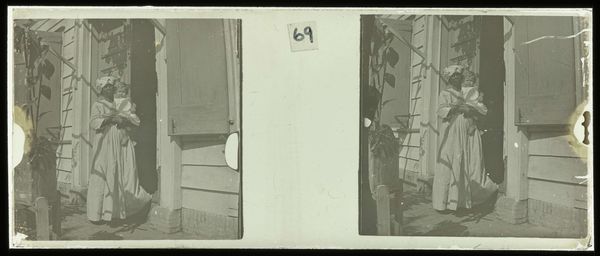
print, photography, gelatin-silver-print
#
portrait
#
print photography
# print
#
landscape
#
social-realism
#
photography
#
gelatin-silver-print
Dimensions: sheet: 20.2 x 25.2 cm (7 15/16 x 9 15/16 in.)
Copyright: National Gallery of Art: CC0 1.0
Curator: Looking at this silver gelatin print, Robert Frank's "Elderly person leaning on radiator--New Mexico," taken in 1955, I'm struck by the palpable weariness conveyed in the photograph. It feels bleak, doesn't it? Editor: Absolutely. The textures speak volumes. There's the smooth metal of the radiator contrasting against the wrinkles on the elderly woman’s face and the rough bulletin board. It gives a sense of institutionalized waiting and enduring hardship. Curator: It's hard to ignore the context of Frank's "The Americans," the book this image comes from. He was dissecting the underbelly of post-war American society, focusing on the marginalized and often unseen. Consider how her position, next to safety announcements and an Eisenhower portrait, positions her in contrast to ideals of prosperity. Editor: Those juxtaposed symbols really hit hard, yes. Radiators themselves are quite loaded objects, signaling both comfort and dependency. Here, she’s absorbing some desperately needed heat. The fact that the images on the board are related to an idealized, and unrealized American prosperity makes it sting that much more. Curator: Frank was challenging the dominant narratives around American identity. Think about the representation of aging, for example, often erased or idealized in popular culture. This is a raw, unfiltered glimpse into a reality far removed from those glossy portrayals. What kind of story about aging do we understand here? Editor: Right, this image challenges assumptions. We are shown a face of hardship, yet we still read perseverance and cultural memory in her face. Notice her careful positioning. She wears some kind of shawl, suggesting protection from her environment, but it is juxtaposed to her age, her placement within an institution. Curator: And it's not just about the subject. It's about Frank's photographic approach. The slightly off-kilter framing, the high contrast—it all contributes to this sense of unease, this feeling of being a fly on the wall witnessing a private moment. I'm constantly grappling with its significance in shaping my views of socio-economic struggles of the mid-twentieth century. Editor: Exactly. It is about finding and capturing hidden signs, hidden struggles. Frank saw the image that spoke a reality deeper than the surface of the midcentury dream. What resonates for me most is how simple objects--radiator, shawl, posters--weave a tapestry that carries powerful meaning for subsequent generations. Curator: Reflecting on it, Frank urges us to not only to observe but also engage with the complexities of life, age, and identity. His vision continues to challenge comfortable illusions. Editor: Indeed, I find I look for how signs and images still reveal so much, generation after generation, challenging me to pause and deeply consider meaning.
Comments
No comments
Be the first to comment and join the conversation on the ultimate creative platform.
